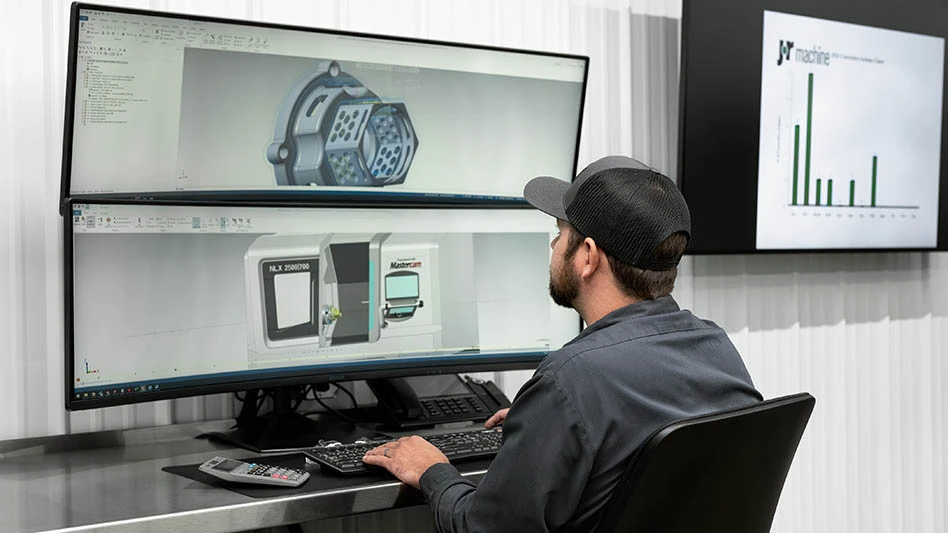
Near-term disruptions to commercial aviation caused by the pandemic are likely to reshape the aerospace industry ecosystem. Aerospace manufacturers need to reimagine their short- and long-term strategies for supply chain optimization and resiliency. If there’s anything that manufacturers should learn from this pandemic, it’s that things can change instantly, and preparation is crucial for success in the face of adversity.
Aerospace manufacturers must adopt a new way of thinking, in addition to investing in back-end information technology (IT) such as cloud, artificial intelligence (AI), and predictive analytics. They need to blend the lines between internal and external processes and partnerships, creating one unified ecosystem that can scale up and down. This is known as neural manufacturing.
A neural manufacturing enterprise leverages technology to connect previously disparate points along the value chain for full data transparency and optimization, with each specific point (shop floor, logistics, aftermarket, service, sales) sending and receiving information in a seamless flow that allows each aspect of the enterprise to adopt to any sudden changes in real-time. This also allows for real-time forecasting and demand tweaks for unprecedented accuracy no matter how volatile the market may be.
Adopting this approach has short- and long-term implications. Short-term, manufacturers can conserve costs and find new ways to establish revenue streams. For example, they can partner with medical device companies to make personal protective equipment (PPE) for first responders and underserved communities – combatting the pandemic and meeting market demand. Additionally, companies can find creative ways to tap unused passenger spaces (cargo and cabin modifications).
Neural thinking offers two key benefits: resiliency and adaptability.
Resiliency safeguards a manufacturer’s internal operations while ensuring external partners can withstand any unexpected challenges in real-time.
This type of resiliency is achieved by establishing a remote work ecosystem where operational efficiency can thrive. Remote work collaboration tools and workspaces, living on the cloud and powered by AI, are important for creating constant communication and connection between an enterprise and its partners.
Where workers don’t have the luxury of having remote-work capabilities, implementing strict social distancing guidelines, providing necessary PPE, investing in augmented reality/virtual reality (AR/VR) capabilities for workforce training, and contact tracing solutions create a resilient enterprise.
Long-term goals are shifting toward developing infrastructure that allows manufacturers to adapt to any future demand changes in real time, better preparing them for other major demand/supply disruptions.
While neural manufacturing is driving a new wave of cloud-based services for unprecedented scalability and optimized spend, data is also shifting the balance between immediate cost reduction and long-term investment.
If COVID-19 vaccinations are distributed in a timely manner and proven effective, aerospace manufacturers need to plan for the potential boom in airline traffic. Similarly, if things take an unfortunate turn, they must have safeguards in place to develop creative, cost-effective ways to continue to drive revenue and maintain operational efficiency. Neural manufacturing will provide a recovery springboard for early adopters, enhancing their competitive differentiation.

Explore the May June 2021 Issue
Check out more from this issue and find your next story to read.
Latest from Aerospace Manufacturing and Design
- Archer completes construction of high-volume manufacturing facility
- Curtiss-Wright’s NXP 16-Core Arm-based VPX single board computer
- Happy New Year
- 2024 Favorites: #1 Article –2024 Forecast
- 2024 Favorites: #1 News – Honeywell to expand Kansas aerospace manufacturing facility
- 2024 Favorites: #2 Article – Hill helicopters get ready for lift-off
- 2024 Favorites: #2 News – GE Aerospace to develop next phase of advanced engine
- 2024 Favorites: #3 Article – Generative design in aerospace





